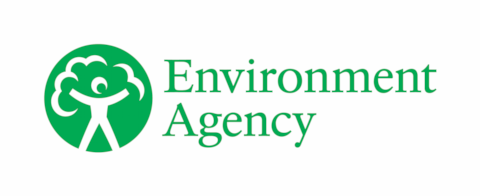East Anglia water situation: June 2025 summary
Updated 15 July 2025
Applies to England
1. Summary
June was a dry month for East Anglia, receiving between 44% and 86% of the long term average (LTA) rainfall. Most rain fell in the first week of the month, allowing soil moisture deficits to briefly recover to notably high levels before returning to extremely high levels by the end of the month. River flows continue to recede with only the Rivers Rhee and Ivel maintaining normal rates, and all other rivers ranging from below normal to extremely low flows. Groundwater levels also continue to recede, most ranging between normal and notably low levels. Therfield Rectory is the exception which remains notably high, sustaining the high flows of the Rhee and Ivel. All public water supply reservoirs are above 75% supply capacity.
2. Rainfall
Rainfall this past month ranged from 44 to 86% of the LTA for the month, over 60% of the regional average occurring between 3 and 7 June. The eastern catchments of East Suffolk and Broadland Rivers were the wettest, receiving normal amounts of rainfall for the time of year while all other catchments received below normal rainfall. The cumulative 3-month and 6-month totals are notably or significantly low across all catchments. The 12-month cumulative totals range from normal in western catchments to notably low in the south and northeast.
3. Soil moisture deficit and recharge
After decreasing briefly at the beginning of the month with the rainfall, soil moisture deficits (SMD) have continued to rise through June 2025. Most regions have an SMD of 101mm to 130mm while Central Area Fenland and South Essex catchments are above 130mm. The SMD for East Essex is 6mm to 25mm greater than the LTA for the month, and all other catchments are 26mm to 50mm higher. While the brief decrease lowered regional average SMD to notably high, the average returned to exceptionally high, ending the month at 120.8mm.
4. River flows
River flows were varied across East Anglia during June, ranging between 15% and 82% of the LTA. With high groundwater levels around Therfield, both the Ivel and Rhee remain at normal flows with most other rivers now at below normal or notably low rates. The Waveney, Little Ouse, Ely Ouse and Colne are all exceptionally low, but the Ely Ouse stands out for being 15% of the LTA while the other rivers sharing its banding range from 34% to 39%.
5. Groundwater levels
Groundwater levels continue to decline with the dry weather of recent months, receiving little recharge. More than half of our groundwater monitoring sites are now reading below normal or notably low levels for the time of year. Sites with normal levels are mostly found at the south of the chalk unit, and Therfield Rectory which is notably high for the time of year in the southwest.
6. Reservoir stocks
At the end of June all reservoir stocks were below their operational curves for the time of year. All were above 80% capacity with the exception of Hanningfield which is at 78.9% capacity.
7. Forward look
7.1 Probabilistic ensemble projections for river flows at key sites
River flow forecasts for September reflect the dry month we have just experienced, with an almost certain probability of exceptionally low. Flows are expected to recover by winter, with a high probability of above normal flows this December.
7.2 Probabilistic ensemble projections for groundwater levels in key aquifers
As with river flows, the groundwater forecast for September reflects the current situation with most groundwater levels in the normal to below normal range. There is a good probability that Therfield will have fallen from notably high to above normal levels. The forecast for March 2026 shows a slight chance of above normal flows, but a higher probability of below normal or lower levels for all sites except Therfield, which has a high probability of normal levels.
Author: Hydrology, Hydrology-EAN-and-LNA@environment-agency.gov.uk
All data are provisional and may be subject to revision. The views expressed in this document are not necessarily those of the Environment Agency. Its officers, servants or agents accept no liability for any loss or damage arising from the interpretation or use of the information, or reliance upon views contained in this report.

